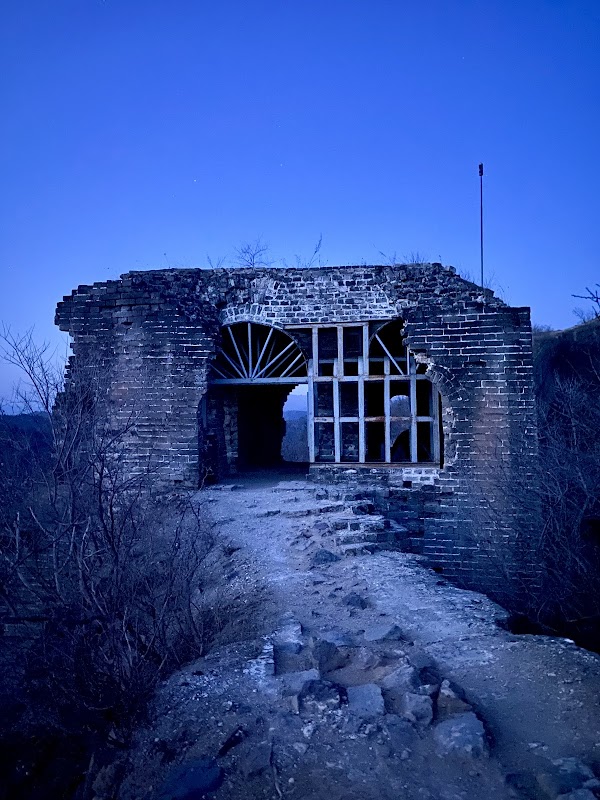Explore the Great Wall of China off the beaten path, where rugged trails cut through dense forests and historic watchtowers guard the high ridges of Beijing’s mountains. This practical hiking guide prepares you for a hands-on adventure that blends nature’s raw beauty with the weight of ancient history.
Wear Sturdy Hiking Boots
Uneven stones and loose gravel on the trail require footwear with solid ankle support and grippy soles to keep you steady on slopes and rough patches.
Carry at Least 2 Liters of Water
The trail has no drinking water points, and the steady climb means dehydration can set in quickly, especially during warmer months.
Start Early to Avoid Midday Heat
Setting off in the morning or late afternoon helps avoid the strongest sun and provides softer light for clearer views and photos.
Respect the Environment
Stick to marked paths to protect native plants and prevent soil erosion; the Wall's structure is fragile here, so tread carefully.
Trekking the Timeworn Trails of the Great Wall: A Practical Adventure in Beijing’s Wild Landscapes
Stretching over rugged ridges and steep valleys, hiking the ancient paths of the Great Wall near Beijing offers an adventure that is both thrilling and grounded in history. This is not a manicured stroll but a journey across weathered stones, where each step presses through centuries of human endurance and nature’s fierce reclaiming. The well-worn bricks curl along jagged cliffs, their surfaces uneven underfoot—a reminder that this is a path built to test strength and spirit.
Starting from a less commercialized section near Jinshanling, expect a hike spanning roughly 10 kilometers with an elevation gain of about 400 meters. The trail weaves through thick pines and dense brush, the trees catching the breeze as if whispering ancient secrets. With every turn, sweeping views unfold: valleys daring you to look deeper, mountain ridges pushing skyward with relentless quiet force.
The terrain demands sturdy hiking boots; stones can be slippery, and some portions require careful footing on loose gravel. Bring plenty of water—the climb is steady, and the midday sun cuts sharply through the canopy. Early morning or late afternoon provides cooler conditions and the soft light enhances every stone’s texture.
Beyond the physical challenge, this hike immerses you in a landscape fiercely itself—one shaped by centuries of weather and warfare. The crumbling watchtowers are not just ruins but markers of resilience, standing guard over wild slopes where birds circle in lazy loops and the wind carries the scent of pine and earth. Respect for this environment is crucial: stay on the path to protect fragile flora and avoid disturbing wildlife.
Practical preparations will make this adventure accessible to many: pack layers against sudden temperature shifts, carry snacks for energy, and plan for 4 to 5 hours to move at a comfortable pace, allowing time to absorb the view and history. Cellular signal fades here, which means the trail commands undivided attention.
Hiking the Great Wall’s ancient paths delivers a rare combination—raw nature framed by human persistence. It’s a test of endurance and a lesson in humility, set against one of the world’s most awe-inspiring backdrops.
Nearby Trips
All Adventures
Boat Charters
Water Activities
Adventures near Beijing
Discover the unique and memorable adventures that make Beijing special.
Frequently Asked Questions
Which section of the Great Wall near Beijing is best for hiking?
Jinshanling is widely recommended for its balance of restoration and wild terrain, offering around 10 kilometers of challenging but manageable hiking with spectacular views and fewer tourists than sections like Badaling.
Is the hike suitable for beginners?
While not technical, the uneven stones and elevation gain require moderate fitness and surefootedness. Beginners with some hiking experience and good preparation can handle the trail safely.
Are there any facilities along the trail?
Facilities are minimal to nonexistent on the trail itself. It’s important to bring your own water, snacks, and supplies, and to plan your route carefully as mobile coverage may be spotty.
When is the best time of day to hike the Great Wall here?
Early morning or late afternoon provides cooler temperatures and softer light for better visibility and photography, plus a quieter experience.
Can I hike the Great Wall year-round?
Yes, but conditions vary widely. Spring and fall provide the best weather, while winter can be icy and summer quite hot. Appropriate gear and caution are necessary for off-peak seasons.
How do I get to the Jinshanling section from Beijing?
You can reach Jinshanling by private car or shuttle bus from Beijing, typically about a 2.5 to 3-hour drive northeast. Organized tours are also available and may include transport and guiding services.
Recommended Gear
Hiking Boots
Protect ankles and provide grip on uneven, rocky surfaces throughout the year.
Water Bottle or Hydration Pack
Essential to stay hydrated; no water sources are available on the trail.
Light Waterproof Jacket
Protects against spring rain showers and unexpected weather changes.
Warm Layer
Keeps you warm during chilly mornings, late afternoons, and colder seasons.
Local Insights
Hidden Gems
- "Climbing the higher watchtowers for panoramic vistas away from crowds"
- "Exploring small village ruins along the trail that recall local life centuries ago"
Wildlife
- "Spotting red foxes slipping through underbrush"
- "Listening for the sharp call of Chinese bamboo partridges nearby"
History
"Jinshanling’s Great Wall was originally built in 1368 during the Ming dynasty, featuring strategic watchtowers designed to signal invasions with fire and smoke, preserving centuries of military tactics."

